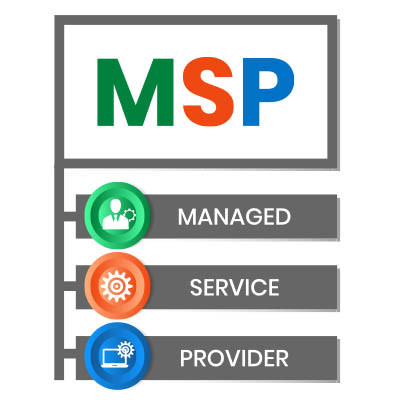Starting a new business is an exciting experience, but choosing the right technology from the beginning plays a big role in how successful and secure your business will be. A strong IT plan keeps your operations running smoothly, protects your data, and makes it easier to grow over time. This month, we’re sharing practical steps to help you build one.
Capital Technology Group Blog
Technology plays a critical role in how businesses operate today. From websites and servers to email systems and cloud applications, most companies rely on a wide range of digital tools to stay productive and competitive. But what happens when something suddenly stops working?
That’s where IT monitoring comes in; and it’s more important than many people realize.
Want to run a business without technology? You’re in the wrong line of work; technology is so deeply ingrained in business that it’s not going anywhere. From your communication platform to your point-of-sale software, you need technology, and where there’s technology, there will inevitably be a need for technicians.
Businesses rely on a ton of technology for their operations and, as such, rely on support to help keep these tools working effectively. We would know! We proudly provide our neighbors with the technical assistance they need to succeed. As we’ve done so, we’ve noticed that there are some support needs we frequently attend to.
Let’s review some of them and why they are so vital for you to have assistance in managing, preferably, from us!
Imagine owning an elevator and only fixing it when it completely breaks down. Sounds ridiculous, right? Well, that’s basically what businesses do when they rely on a break/fix IT strategy.
Break/fix IT is exactly what it sounds like, you don’t call in the experts until something goes wrong. On the surface, it might seem like a way to save money, but in reality, it’s a recipe for stress, lost revenue, and major headaches. Let’s talk about why this approach just doesn’t make sense anymore.
With technology being such a crucial element of many businesses and their operations, it only stands to reason that it ultimately pays to invest in and maintain it. That said, many businesses lack the resources in one way or another to properly manage their IT independently.
In these cases, it pays to outsource some or all of your IT support, and for various reasons. Let’s go over three of the major benefits to be had.
Technology is so ingrained in business that it’s nigh-impossible to operate without it. For this reason, cyberattacks on businesses are even more devastating, as they can halt operations and expose important data. Today, we want to highlight five common problems you might encounter with your cybersecurity.
Picture this: you or a team member encounters a technology issue in the middle of the workday. Simple, you might think… just call your in-house IT department. However, the members of your IT team are visibly overworked, scurrying around the office, trying to get some of the tasks off their to-do lists. They’re visibly running out of time, patience, or, most likely, both. It isn’t a good time to bother someone for help; that’s obvious, but what option is there?
Chances are that your business’ technology has gotten more complex in the past few years. This complexity has likely created some confusion on how best to manage your technology. Couple this with the more sophisticated threats that have been developed over that time, and there is a real risk to the welfare of your business coming from the technology you depend on daily. Today’s blog will discuss how increased complexity can be managed competently.
Computer problems aren’t just annoying, they are a major impediment to a business’ overall productivity. There are several common problems that can slow down your computer, each with its own signs, causes, and fixes. This month we’re going to look at some of these problems and what the solutions are for them.
Your organization’s technology doesn’t do you any good if it is inaccessible. That’s why having a thoroughly thought-out and carefully implemented plan to proactively keep ahead of technology issues is so important. This month, we want to talk a little bit about technology-related downtime and how to keep it from being a royal pain in your business’ rear.
In 1987, the United Nations defined sustainability as “meeting the needs of the present without compromising the ability of future generations to meet their own needs.” Today, almost 40 years later, businesses have various options to help promote their own sustainability. Let’s discuss just a few options and how we can help you enact them.
After the major flop that was Windows 8 and the 8.1 Update, Microsoft hit a home run with Windows 10 in both the personal and professional contexts. However, Windows 11 is now in a position to succeed Windows 10, and Microsoft is making plans to end support for Windows 10. Here’s what you’ll need to know.
When your employees struggle with their technology, who do they turn to? Do you have anyone at your business who is, without a doubt, the go-to IT resource who can help them address simple issues like changing a password or fixing a problem with their workstation? There is a name for this kind of support: the help desk. Let’s discuss why your business needs one and why it might be in your best interest to outsource this responsibility.
IT is pivotal to the success of any business. Still, for small and medium-sized businesses, there might be limitations placed on the organization's potential resources to cover its needs. Outsourcing IT responsibilities to a managed service provider is a viable option for improving the odds of finding success with technology management for SMBs. Here’s what your business can stand to gain from working with an MSP.
Businesses that struggle with managing technology have a lot to gain by working with a managed service provider, or MSP. These providers are able to help businesses just like yours maintain and improve operations through the use of technology management tools and services. Here are three of the greatest benefits that working with an MSP can provide for businesses just like yours.
Businesses that don’t leverage managed services for their technology infrastructure are leaving a lot of money on the table, but it’s not always easy to see until you break down what the solutions really do for you. In isolation, they might not seem valuable, but when combined, they save your business significant amounts of capital.




















